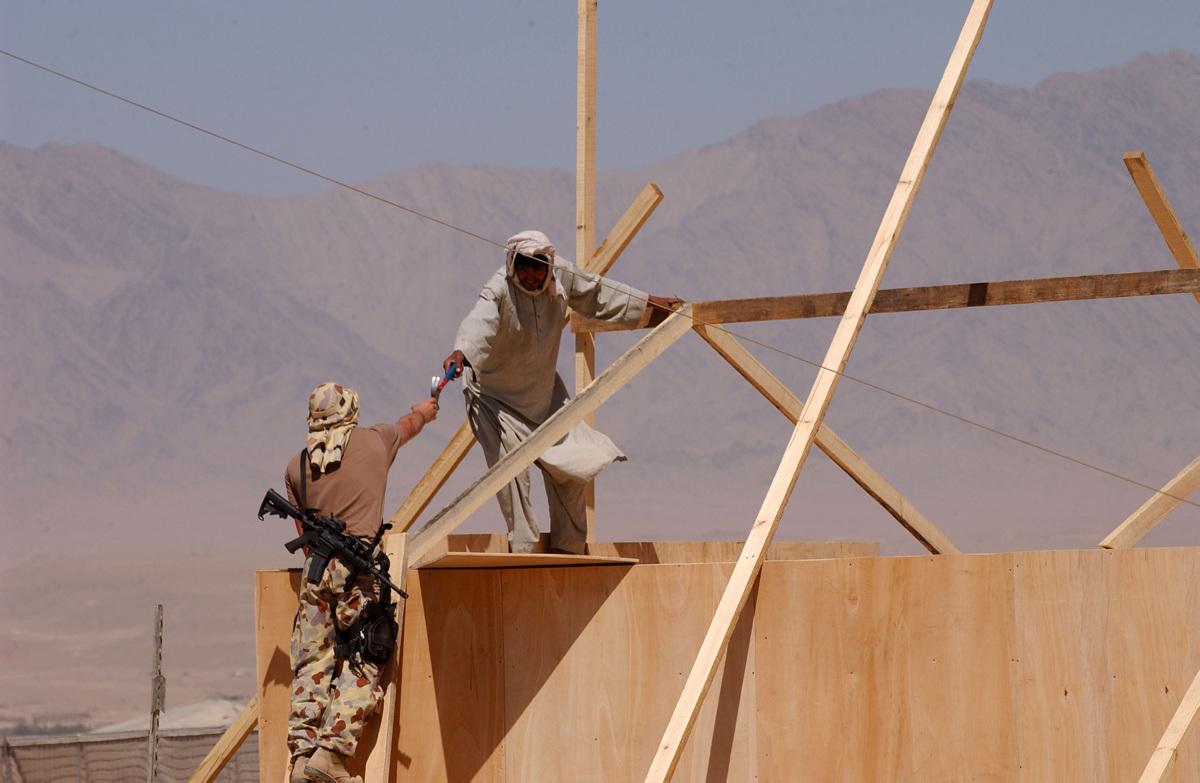Australia–Afghanistan relations: reflections on a half-century
Posted By William Maley on September 10, 2019 @ 06:00

It is now 50 years since diplomatic relations were formally established between the Commonwealth of Australia and the Kingdom of Afghanistan. Superficially, the two countries might seem to have little in common. While each has a population of less than 40 million, the Australian population, although now distinctly multiethnic, still substantially reflects the effects of two centuries of predominantly European migration, while the population of Afghanistan remains dominated by its historical position as a crossroads between Asia and the Middle East. Furthermore, Australia is a stable, secure and prosperous democracy, whereas Afghanistan in the last four decades has endured invasion, population displacement and severe economic dislocation.
Nonetheless, there’s more to unite Australians and Afghans than one might think. In the 19th century, Afghans made their way to Australia to provide transport by camel in parts of the harsh inland. The 1901 census recorded the presence of 394 Afghanistan-born people in Australia. By the time of the 2016 census, the number had risen to 46,800. In the period following the overthrow of the Taliban regime in Afghanistan in 2001, more than 25,000 members of the Australian Defence Force served in Afghanistan, building on earlier deployments of ADF demining specialists who did much to establish a positive reputation for Australians even before the post-9/11 era. For more than a decade, Australia has had a resident embassy in Kabul, and Afghanistan a resident embassy in Canberra.
Recent years have brought Australia and Afghanistan far closer to each other than ever before in their history. My new ASPI study [1], published today, explores some of the key dimensions of the development of that relationship.
The establishment of the embassy in Kabul was in no small measure due to a significant increase in Australia’s military field presence. From 2005, Australia deployed personnel from both the Special Air Service Regiment and the 2nd Commando Regiment. As part of Operation Slipper, Australia deployed a reconstruction taskforce in September 2006, working with the Dutch in the province of Uruzgan, one of the least developed parts of Afghanistan.
After the Dutch finally withdrew in 2010, Australia worked with the United States until the process of transition (inteqal) saw Australian forces leave. On 28 October 2013, Prime Minister Tony Abbott on a visit to Uruzgan announced the end of Australia’s military deployment. ‘Australia’s longest war’, he said [2], ‘is ending, not with victory, not with defeat, but with, we hope, an Afghanistan that is better for our presence here’.
As a result of nearly two decades of globalisation, Afghanistan is a very different country now from what it was in 2001, and Australia has been part of that story. In May 2012, the Comprehensive Long-term Partnership between Australia and the Islamic Republic of Afghanistan was signed by Prime Minister Julia Gillard and President Hamid Karzai. One area highlighted related to the Afghan National Security Forces. The text [3] provides that:
the Governments will develop long-term cooperation on shared national security challenges and continue to work together to build the capacity of the ANSF and to promote international support for the ANSF … Beyond transition, the range of support options may expand to include a program of defence cooperation with opportunities for professional training in Australia.
This has paved the way for Afghan officers to study at the Australian Defence College at Weston Creek, and for cadets to train at the Australian Defence Force Academy and the Royal Military College at Duntroon. With US President Donald Trump’s move to suspend [4] what had become a dangerously ill-focused ‘peace process’, Australian aid to the ANSF will likely be more important than ever.
Ultimately, however, what ties Afghanistan and Australia most strongly to each other is a shared strategic interest in seeing the Western-supported transition in Afghanistan continue to progress. The consequences of a demonstrable failure would be dire. Any such failure would undoubtedly fuel a narrative similar to the one that appeared following the Soviet withdrawal from Afghanistan in 1989: that radical religion is a force multiplier that can defeat even a superpower. This would likely have the effect of stimulating radicalism all the way from the Arab Middle East to the Indonesian archipelago, undermining years of effort directed at countering violent extremism in Australia’s neighbourhood and beyond.
A failure in Afghanistan could also trigger new flows of Afghan refugees. But, most seriously of all, such an outcome could inspire a Pakistan-based extremist group such as Lashkar-e-Taiba to attempt another major terrorist attack in India, along the lines of the November 2008 attack in Mumbai, and with catastrophic consequences. It is vital to ensure that such outcomes are avoided, and that the aspirations of ordinary Afghans to be constructive partners in an increasingly globalised world can be realised.
Article printed from The Strategist: https://aspistrategist.ru
URL to article: /australia-afghanistan-relations-reflections-on-a-half-century/
URLs in this post:
[1] new ASPI study: https://www.aspistrategist.ru/report/australia-afghanistan-relations-reflections-half-century
[2] said: https://www.smh.com.au/politics/federal/long-war-ends-with-hope-says-tony-abbott-20131028-2wc4j.html
[3] text: https://pmtranscripts.pmc.gov.au/release/transcript-18589
[4] suspend: https://www.nytimes.com/2019/09/07/us/politics/trump-taliban-afghanistan.html?action=click&module=Top%20Stories&pgtype=Homepage
Click here to print.